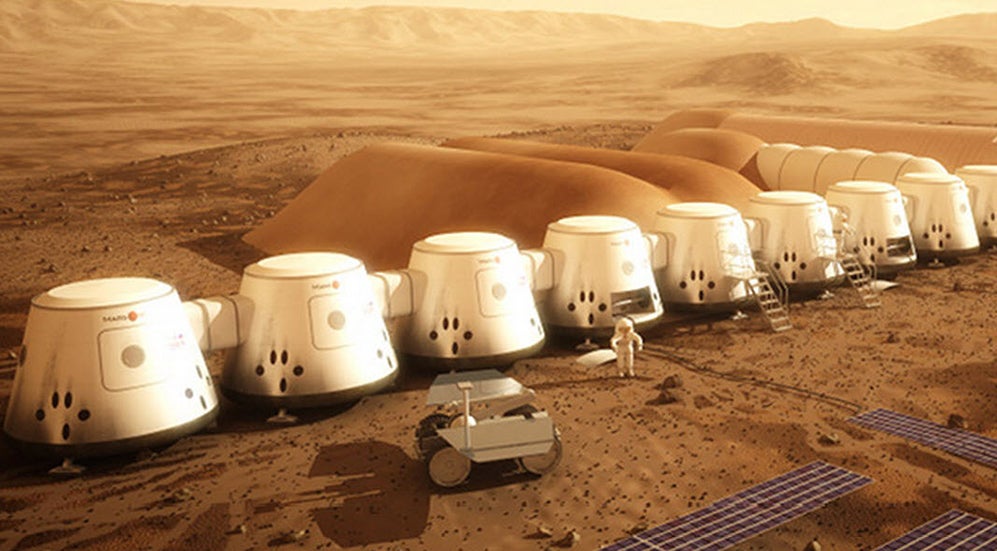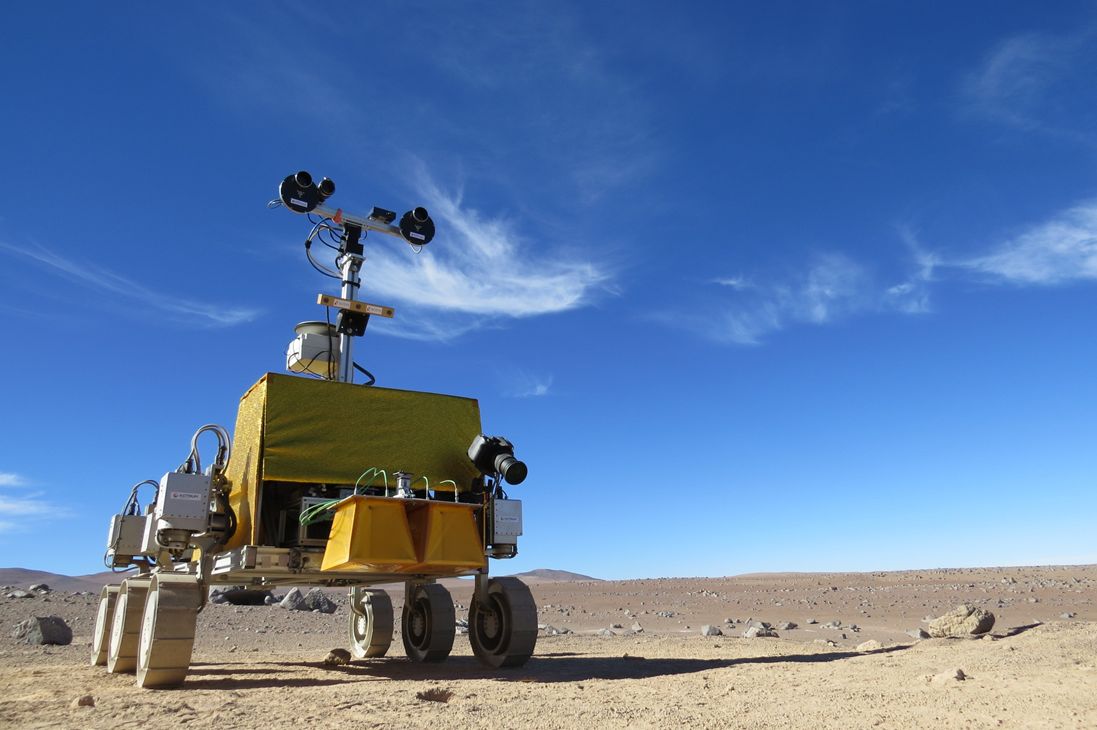SpaceX is preparing to send a rocket to Mars in 2018. They are increasingly succesful in landing and reusing their launch vehicles, so the cost of putting things in orbit is dropping for them, as Elon envisioned. As the goal of SpaceX is not just profit but also to create a viable alternative to Earth for humanity to survive catstrophies on, sending a rocket there asap is a logical step.

Honey, I’m home!
The process of habitating Mars won’t be too easy, landing there is difficult, once you land you have to breath and be safe from radiation, eat and have an environment that doesn’t depress the hell out of you, and getting this in place will take time. The good thing is : Mars is habitable, it has CO2, it seems to have water. It will work. Soon enough (also with the new EM drives for space ships) we will see trips from Earth to the Moon, Mars and beyond (still a 30 year trip to the nearest planet).

A total example of maximizing life on Earth..
On Earth we have a different challenge, which is not to go extinct and see our oceans turned into lifeless toxic gas spewing acid pools. This sounds dramatic, but it isn’t. In the history of our planet it turned very hostile to life quite a few times. If you’re a sulfur breathing microbe, then you don’t need to worry. Otherwise do something.

This rover is pretending to be on Mars..
One country that knows all about harsh circumstances is Chile. Its Atacama desert actually quite closely models the circumstances on Mars. It is a very dry country, and we don’t mean they are humourless (although humour means liquid, so in a way…). Chile has a lot of sun (warning : long image).

Especially at the top the insolation is crazy, yet nothing grows because of the cold Humbold current from which little water evaporates. on the other side the mountains of the Andes keep all the moisture on the Argentinian/Bolivian side. It rains very little, so 0.2 inches per year, or sometimes, as a freak event 2 inches (2015). Even so, the country is drying up because of climate change.

Economically Chile is a mining country, it has copper mines, lithium, gold, tin ,diamonds, it is actually powering some of its mines with renewable energy .
You can see from the above image that there is plenty of room for more panels 

Chile has Lithium, so could build a mega battery factory and export.
There’s one technology we think should be used, and who wants to know what it is will have to be an investor paying some cash up front. The other ones are low pressure ionic desalination, drones, irrigation systems. Israel is an expert but it really isn’t that hard. What will be hard is to start this thing. Once it gets going it wil pay for itself, it will create jobs, provide food.
Economics is all about exploiting opportunities, we are nearing the end of the economic era and entering the Roboeconomic era, in which renewables and robotics change what counts as an opportunity. Basically if you have sunshine, water, minerals, you will be capable of generating circumstances welcome to life, trees, food, fish and thus people enjoying those resources. No longer is our planet divided into the invisible hinterland where industry wreaks havoc and a pretty cityscape where the wifi generation pretends to be relevant, we can live everywhere where the fundamental requirements are met, and we can use renewables to make that so if necessary.
How long before Chile turns from Mars into Earth? It’s up to us.
